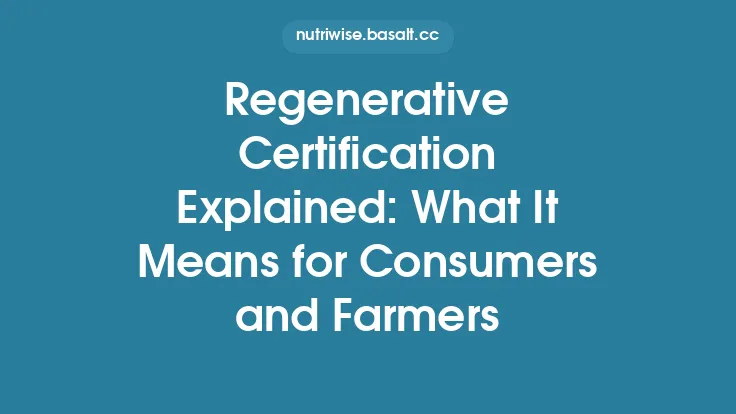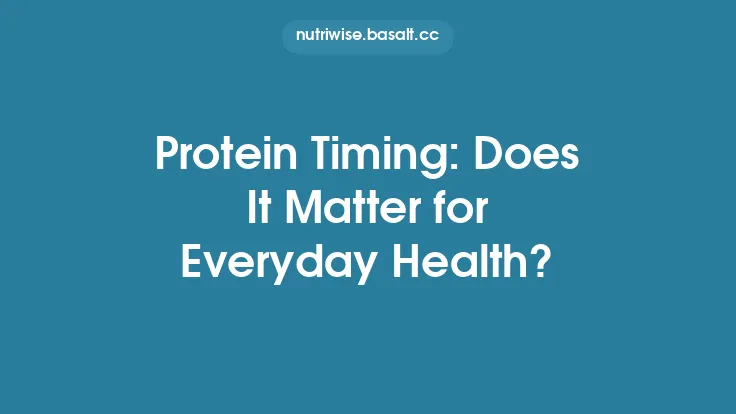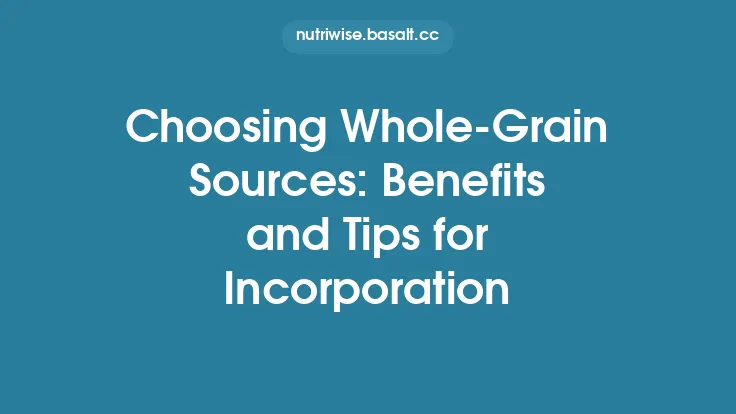Community‑based fisheries (CBFs) are small‑scale, locally managed fishing operations that place decision‑making power in the hands of the people who depend on the resource the most: the fishers, their families, and the surrounding community. Unlike large industrial fleets that operate under distant corporate or national directives, CBFs are rooted in place, culture, and tradition. Their stewardship model blends ecological knowledge passed down through generations with modern management tools, creating a resilient framework for sustainable seafood production.
The Ecological Foundations of Community‑Based Fisheries
Localized Knowledge and Adaptive Management
Fishers who work the same waters day after day develop an intimate understanding of seasonal patterns, species behavior, and habitat changes. This “tacit knowledge” enables rapid, on‑the‑ground adjustments—such as altering gear types, shifting fishing grounds, or modifying effort—when early signs of stress appear. When this knowledge is codified into community rules (e.g., seasonal closures, gear restrictions, or catch limits), it creates a feedback loop that can keep fish stocks within biologically sustainable levels.
Habitat Protection and Restoration
Many CBFs incorporate habitat stewardship as a core activity. For example, coastal communities in the Philippines have organized “reef guardians” who patrol and clean coral reefs, while Pacific Island villages have established mangrove replanting programs that enhance nursery habitats for juvenile fish. By protecting the ecosystems that support fish populations, community fisheries contribute directly to the productivity and resilience of the marine environment.
Reduced Bycatch and Gear Selectivity
Because CBFs typically target a narrow range of species using low‑impact gear (handlines, traps, small gillnets with appropriate mesh sizes), they generate far less bycatch than industrial operations. Moreover, community rules often mandate the use of escape panels, biodegradable hooks, or selective traps, further minimizing unintended catches and habitat damage.
Socio‑Economic Benefits of Supporting Community‑Based Fisheries
Food Security and Nutrition
In many coastal regions, CBFs supply the majority of locally consumed fish, providing a reliable source of high‑quality protein, essential micronutrients (iron, zinc, iodine), and omega‑3 fatty acids. Because the fish are harvested, processed, and sold within the same community, the supply chain is short, reducing the risk of spoilage and ensuring fresher, more nutritious products for consumers.
Livelihoods and Poverty Alleviation
Small‑scale fishers often operate on thin profit margins, but the income they generate circulates within the community, supporting ancillary businesses such as boat building, net making, ice production, and local markets. Studies have shown that a 10 % increase in the profitability of community fisheries can lift thousands of households out of poverty, especially in developing nations where alternative employment opportunities are limited.
Cultural Preservation
Fishing practices are woven into the cultural fabric of many coastal societies. Rituals, festivals, and oral histories celebrate the relationship between people and the sea. When community fisheries thrive, they safeguard these intangible heritage elements, fostering a sense of identity and belonging that can be lost when industrial fleets dominate.
Gender Inclusion and Empowerment
Women often play critical roles in post‑harvest processing, marketing, and household nutrition management. Community‑based management structures that explicitly include women in decision‑making bodies have been linked to more equitable resource distribution and improved compliance with sustainability measures.
Governance Structures that Enable Success
Co‑Management Arrangements
Co‑management blends top‑down regulatory authority (national fisheries agencies) with bottom‑up community input. Legal frameworks that recognize community rights to access and manage local fisheries—such as “customary tenure” or “community marine protected areas”—provide the legitimacy needed for enforcement and conflict resolution.
Participatory Monitoring and Data Collection
Community members can be trained to collect catch data, size composition, and effort metrics using simple tools (e.g., logbooks, mobile apps). This citizen‑science approach fills data gaps in national monitoring systems and supplies managers with timely information to adjust regulations.
Conflict Resolution Mechanisms
Disputes over fishing grounds, gear use, or resource allocation are inevitable. Effective CBFs establish transparent, locally accepted processes—such as village councils or traditional elders’ panels—to mediate conflicts, thereby maintaining social cohesion and compliance.
How Consumers Can Support Community‑Based Fisheries
Purchase Directly from Local Fish Markets
Buying fish at community markets, fish stalls, or directly from fishers shortens the supply chain and ensures a larger share of the sale price reaches the fishers. Look for stalls that display the name of the fishing village or cooperative.
Choose Certified Community‑Based Products
While the article avoids discussing MSC certification, there are other labeling schemes and third‑party audits that specifically verify community ownership and management (e.g., “Community‑Managed Fishery” seals). These labels often accompany traceability information that links the product back to a specific community.
Support Fair‑Trade and Social‑Enterprise Initiatives
Some NGOs and social enterprises partner with coastal communities to create fair‑trade seafood lines. By purchasing these products, consumers help fund capacity‑building, training, and infrastructure projects that strengthen community resilience.
Engage in Consumer Advocacy
Writing to local representatives, participating in public comment periods for fisheries policies, and supporting legislation that recognizes community tenure can create a policy environment conducive to the growth of CBFs.
Educate and Share Knowledge
Sharing stories about the people behind the seafood on social media, in restaurants, or at community events raises awareness and builds demand for responsibly sourced, community‑managed fish.
Case Studies Illustrating Impact
1. The Bohol Community Marine Reserve, Philippines
In 2005, a coalition of 12 fishing villages established a 2,500‑hectare marine reserve with strict no‑take zones and seasonal closures. Within five years, the biomass of reef fish inside the reserve increased by 150 %, while catch per unit effort (CPUE) for the surrounding villages rose by 30 %. The increased catch allowed fishers to reduce fishing days, improving work‑life balance and decreasing fuel costs.
2. The Gambia’s Small‑Scale Fishers’ Cooperative
A cooperative of 85 fishers formed a joint marketing board that negotiated directly with urban retailers, bypassing middlemen. By standardizing quality and packaging, the cooperative secured higher prices, which were reinvested in solar‑powered ice plants and boat maintenance. The cooperative’s success led to a 20 % reduction in post‑harvest loss and a measurable increase in household incomes.
3. Indigenous Coastal Communities of British Columbia, Canada
Through a legally recognized “co‑management agreement,” Indigenous nations co‑manage salmon fisheries with provincial authorities. The agreement incorporates traditional spawning site monitoring and limits on harvest quotas based on scientific stock assessments. This hybrid approach has helped maintain salmon runs while preserving cultural practices tied to the fishery.
Challenges Facing Community‑Based Fisheries
External Pressures from Industrial Expansion
Large commercial fleets, offshore aquaculture, and tourism development can encroach on traditional fishing grounds, leading to habitat degradation and competition for resources.
Limited Access to Capital and Technology
Investing in modern, low‑impact gear, cold‑storage facilities, or market certification can be financially out of reach for many small‑scale fishers without external support.
Regulatory Complexity and Enforcement Gaps
Navigating national fisheries laws, licensing requirements, and export regulations can be daunting, especially when policies are not tailored to the scale and nature of community fisheries.
Climate Change Impacts
Rising sea temperatures, ocean acidification, and shifting species distributions pose long‑term risks to the productivity of local fisheries, requiring adaptive management strategies that many communities lack the capacity to develop alone.
Strategies to Overcome Barriers
Capacity‑Building Programs
Technical training in sustainable gear, post‑harvest handling, and business management equips fishers with the skills needed to improve product quality and market access.
Micro‑Finance and Cooperative Funding
Community‑based micro‑loan schemes, often administered through cooperatives or NGOs, can provide the seed capital for essential upgrades such as solar ice makers or GPS navigation tools.
Policy Advocacy and Legal Recognition
Supporting the enactment of laws that grant exclusive fishing rights or tenure to coastal communities safeguards their access and incentivizes stewardship.
Climate‑Resilient Management Plans
Integrating climate projections into co‑management plans—such as adjusting seasonal closures based on shifting spawning times—helps communities anticipate and adapt to environmental changes.
The Future of Community‑Based Fisheries
The trajectory of global seafood demand points toward a need for diversified, resilient supply chains. Community‑based fisheries, with their blend of ecological stewardship, cultural continuity, and socio‑economic benefits, are uniquely positioned to meet this demand while preserving marine ecosystems. Scaling up their impact will require a concerted effort from policymakers, NGOs, the private sector, and—crucially—consumers who choose to support the people behind the plate.
By recognizing the intrinsic value of locally managed fisheries and taking concrete steps to back them—through purchases, advocacy, and investment—we can help ensure that the oceans remain a source of nourishment, livelihood, and heritage for generations to come.





